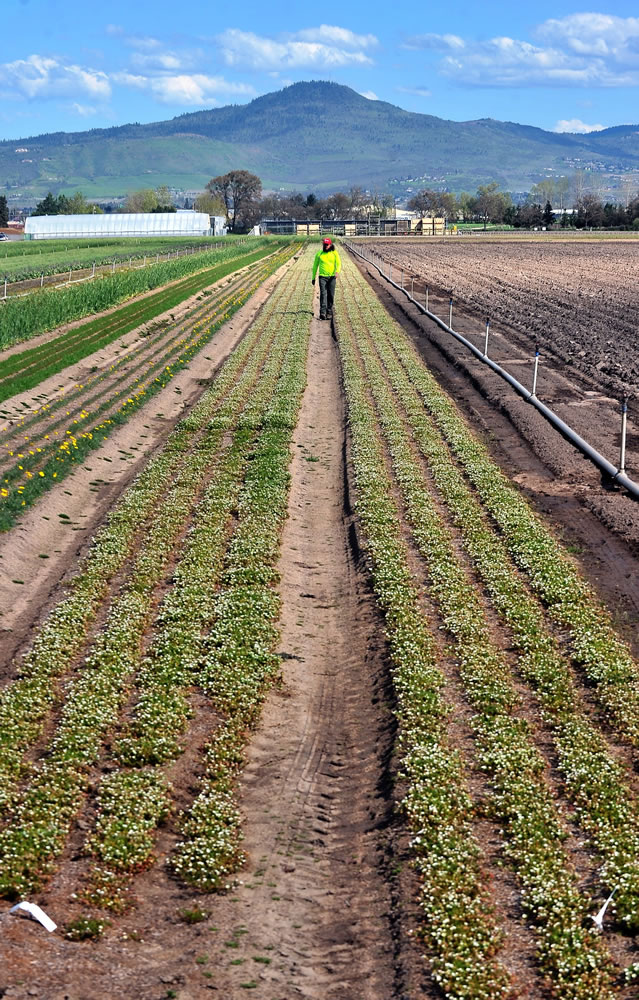CENTRAL POINT, Ore. — Paul Benton looks down a 900-foot-long row of large-flowered woolly meadowfoam and he’s seeing more of this endangered and extremely rare plant than most botanists could possibly see in their lifetimes.
“That’s why it’s called meadowfoam, because it’s supposed to be like sea foam in a meadow,” says Benton, an Oregon Department of Transportation wetlands specialist. “In the wild, though, it’s not. But here, it’s cool to see.”
The federal J. Herbert Stone Nursery is finding great success in growing this huge swath of meadowfoam along with a massive patch of another endangered and rare plant, Cook’s lomatium, as part of a project to seed new vernal pools with these rare native species.
The plants are grown so Benton can harvest their seeds and scatter them in a 44-acre chunk of Agate Desert that’s being turned into vernal pool habitat as mitigation for filled-in vernal pools as part of ODOT’s planned Highway 62 bypass.
Now in their second year of growing plants at the nursery, Benton and his crews have found that the meadowfoam thrives so well in this environment that they literally are raking the seeds in.
“It grows in a very harsh environment, but you bring it here and baby it, it goes crazy,” Benton says.
“Last year, we got 90 pounds of (meadowfoam) seeds off 1/10th of an acre and that (row) should be about 180 pounds this year,” he says. “Harvesting with a rake and filling hoppers is so cool.”
Benton is charged with recreating vernal pools in a 44-acre portion of a 63-acre ODOT mitigation site off Truax Road, where vernal pools were filled in to make grazing land in the 1920s. The work includes scattering seeds from about 20 different native plants, including these two endangered plants.
Large-flowered woolly meadowfoam is found only in the Agate Desert. Cook’s lomatium, also known as Cook’s desert parsley, is native to the Agate Desert and also is found in the French Flat area of the Illinois Valley in Josephine County.
The mitigation plans require that 200 meadowfoam plants and 3,400 Cook’s lomatium become established at the site, and for the first two years of the mitigation, Benton collected the seeds from wild plants. But that proved very difficult and time-consuming because the wild sites had to be painstakingly inventoried to ensure that no more than 10 percent of the wild seeds were collected.
In 2012, he contracted with Stone to give it a whirl. The plants get watered and fertilized and then they are left to their natural devices to produce seeds, which were first collected last spring and summer.
“Occasionally you run into a species that doesn’t like to be treated nicely,” nursery Manager John Justin says. “A lot of species, when you plant them in a nursery environment, they thrive.”



